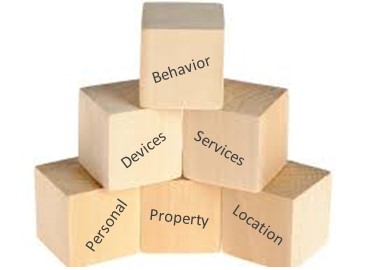Insurance and the IoT – The opportunity and threat

Kevin Meagher, vice president of BusinessDevelopment for ROC-Connect
The Internet of Things has already infiltrated the consumer market with every day smart products, such as your thermostat, remote control and alarm system.
As the IoT continues to grow, it has the potential to be a game changer for the insurance industry. However, in a recent survey by FC Business Intelligence of over 300 insurance companies 60% think the IoT is a long term issue. This is a little surprising given many industries have already made big bets on what is widely recognised as a multi-trillion-dollar opportunity.
In the US, all the major retailers have entered the space alongside service providers such as AT&T. Apple, Google, and Microsoft have made their moves with differing strategies and business models. The UK is following fast with British Gas leading the way and retailers like John Lewis and Dixons entering the market, says Kevin Meagher, vice president of Business Development for ROC-Connect.
These businesses recognise the ability to refine and exploit data from devices to deploy new value-added services will be critical to their success in a connected world.
Given that data is the lifeblood of the insurance industry it’s surprising that they have been slow to enter the market. Historically, the traditional building blocks for assessing risk have been simple. Insurers use information about the customer (credit risk, history of claims), their property (type, size, cost of rebuild), and the location (weather, local hazards). This existing consumer business model has significant limitations in a digital age.
Consumers don’t really have a relationship with their insurer. Consumers call once a year, haggle over price, and then pray they never actually use what they just bought. The insurance discounts offered as enticements make little sense. Savings are offered for having security systems and fire sensors even though more than half the customers never switch their alarms on and the fire sensor batteries are flat!
In the future, mixing the traditional data model with IoT data will give much deeper insights. Data from devices in the home, information on the services customers use, and insights into personal behavior, will all help insurers make smarter decisions and to develop better business models.
The IoT should excite the traditional actuarial teams. Insurance companies can actually see when a homeowner changes the battery in the smoke detector, and reward their customer for doing so. Real time data from devices that can reduce fire, flood and theft losses has huge benefits. In the US, the Boston Consultancy Group estimated it could reduce annual claims by 40%-60%; with almost $10Bn a year in claims, that is a huge saving.
However, there is a bigger opportunity. Insurers can use the IoT to reinvent how they engage with customers by bundling smart home and IoT products and services with policies to deliver more value and drive consumer engagement.
Most customers with smart home systems interact on an almost daily basis with their service provider. Moving the brand from an annual to almost daily interaction and shifting from being reactive to proactive by providing systems that help prevent losses, will deliver real benefits to both consumers and insurers.
There are challenges. The IoT is a technology insurers do not understand and supplying hardware is not something they have ever done. However, if that’s a stretch, they can forge new partnerships with the companies that can supply and support smart home solutions. Security and data privacy are also real issues but many leading smart home service providers have developed robust systems and policies.
The biggest mistake insurers could make is to ignore the threat and ponder. Retailers made that mistake when they failed to recognise the power of the internet. They were confident customers would never shop online due to security risks of giving up credit card information. Before they realised they were wrong, new entrants such as Amazon had stolen a huge market share. Insurance companies can learn from those mistakes, realising the benefits of the IoT far outweigh the risks.
The author of this blog is Kevin Meagher, vice president of Business Development for ROC-Connect
Comment on this article below or via Twitter @IoTGN
